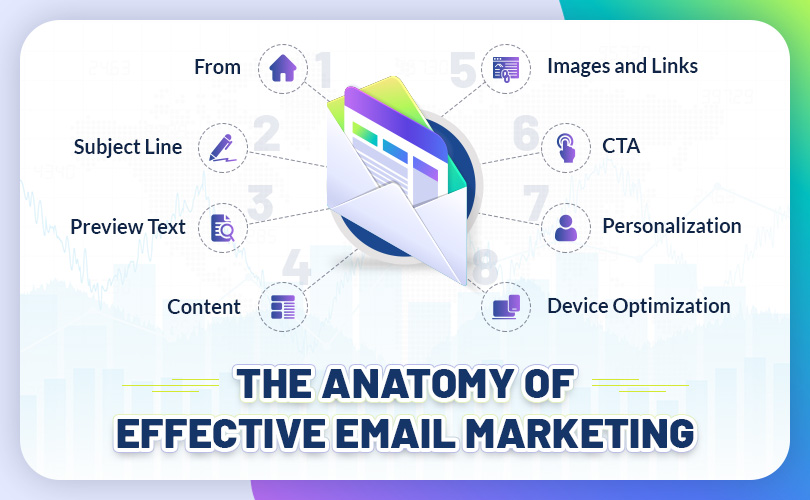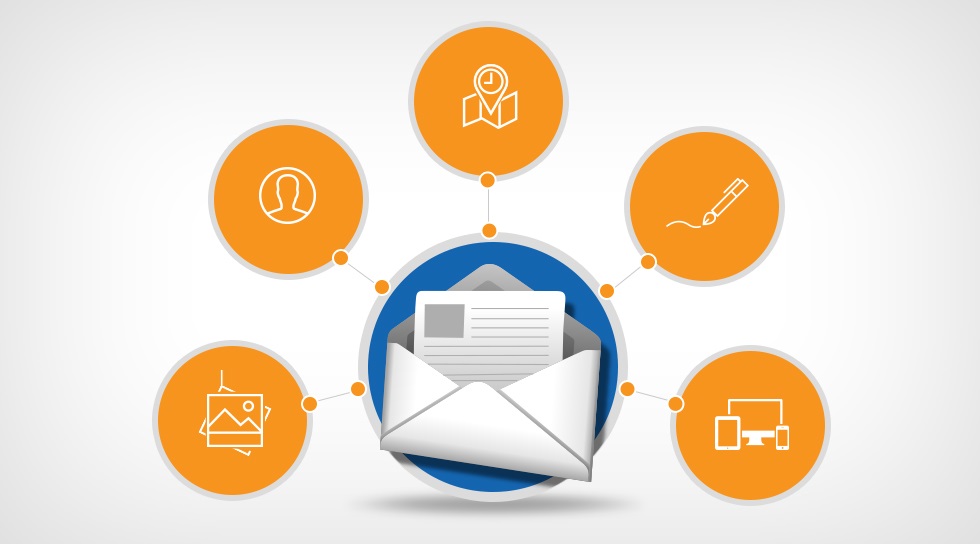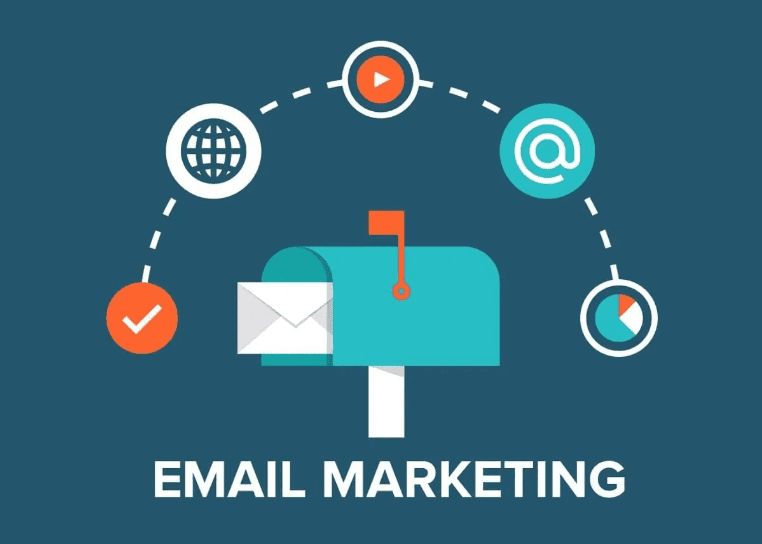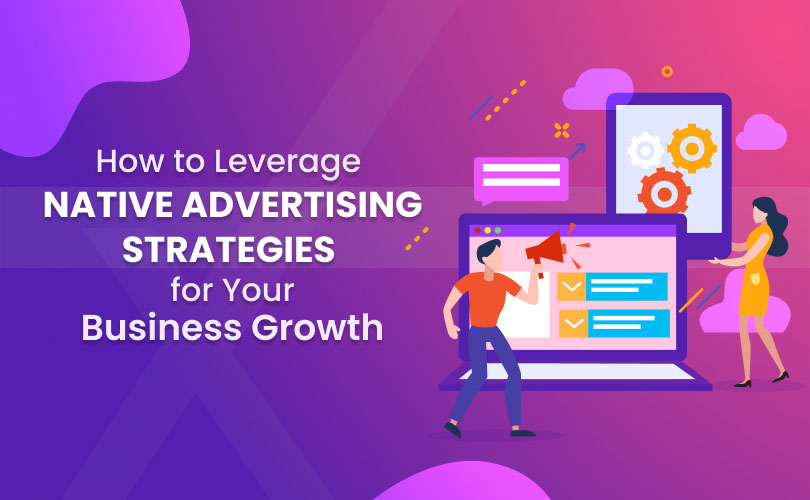The Anatomy of Effective Email Marketing

You may have heard that email marketing is dying, dead, or simply doesn’t deliver any tangible results anymore. Well, don’t believe the hype! Email was one of the first forms of digital communication, and has been around for decades, even before the world became truly digital. Email had a humble beginning as a form of personal academic communications, but over time it grew to become the official communication channel of large corporations around the globe. And even though other apps like social media tend to take center stage in the public eye, email marketing continues to deliver ROI and convert leads for companies every single day. And in many ways, email is still the great equalizer in the world of digital marketing today; we’ve certainly found this to be true in our work with digital marketing clients at Cibirix!
Fun fact: Did you know that the first email was sent in 1971 by a computer engineer named Ray Tomlinson? If that name doesn’t ring a bell for you, it should. Tomlinson later became the forefather of the internet!
What does email marketing mean, exactly?
At a base level, email marketing is another viable way to promote your products or services with potential customers. But email marketing done right can be about so much more than just that. It can also be a great way to build and sustain relationships with your current customers. You can use email to keep your customer informed about your brand, new product offerings, what you’re doing to engage with and serve your community, and more. An effective email marketing approach can also help you to retain existing customers and build more brand loyalty through creative messaging and valuable content. In fact, email marketing enables you to build a bond with your customer in a manner that other platforms simply can’t match – IF you do it the right way!
Here are just a few relevant statistics which serve to illuminate just how valuable email marketing is
- The number of email users globally is estimated at 4.3 billion (Statista, 2021). The number of email users is set to grow to around 4.6 billion by 2025. Those massive numbers should get your attention; businesses don’t want to miss the opportunity of engaging through email marketing.
- Currently, some 333 billion emails are expected to be sent and received every single day of 2022 alone (Statista, 2021). That’s a staggering amount of daily emails!
- If you’re a business owner or business leader, you’re probably looking for some ROI numbers. Well, how about this? For every dollar you spend on email marketing, you can expect to receive an average return of up to 42 dollars (DMA, 2019)!
- Email marketing is an excellent medium for mass content distribution. Through email, marketers can distribute content organically, and can also run some paid campaigns to help promote their content to prospective customers, current clients, and business partners.
- Do you know that welcome emails typically have a high open rate? The average open rate of a welcome email from a particular business is 82%. That should help you to visualize the real potential of email marketing performance for your enterprise.
The elements of an effective email
What are the individual elements that make an email effective? The email marketing world is all about seeking to maximize the impact of each component of an email message. Here, we’ll walk through the anatomy of effective email marketing from the subject line to the call-to-action (CTA).
Naturally, you’ll want to consider the overall message of the email, but you should also pay particular focus to some key components and receiver steps which help to determine (1) whether the user will even open the email to begin with, and (2) whether the user will read through to the end. Let’s take a closer look at the anatomy of a compelling marketing email, and which aspects matter the most:
1. “From” field
The “from” field is an essential piece; it can either help to build trust, or it can help to repel your would-be reader. Many people will check who an email is from before looking at anything else.
Here’s a good tip – always try to avoid generic email addresses. You don’t want your message to feel like a mass marketing email right off the bat. It’s better if your “from” contains your personal name, or the name of someone from within your organization. Emails tend to be opened more frequently if they are perceived to come from an individual, rather than from some sales team or marketing team. It’s basic human psychology; we prefer to connect with individuals over unknown groups or organizations. If the “from” feels too generic, there’s a good chance your email might not get opened in the first place.
2. The subject line
The subject line comes next right after the “from” field. This is another key element of the email marketing equation, in terms of helping a recipient decide whether they want to open your email or not. Research suggests that 35% of readers will open an email based on the subject line alone.
Why is the subject line important? For starters, it should give some indication about what the email is about. Here are a few rules to keep in mind when writing the subject line.
- Be creative. You want to craft a subject line that entices recipients to open your email.
- Always be careful with punctuation, and don’t go overboard with exclamation marks.
- Try to maintain a balance with capital letters. You can use them, but don’t abuse them.
- You can also try including some emojis or special characters to make your subject line more attractive.
- Studies suggest that a subject line which creates some suspense has a higher opening rate, including for B2B addressees.
- Make it unique, and look for ways to personalize it with your brand touch.
Tip: If you’re featuring a sale or promotion, the inclusion of percentage off, sale words, and an emoji or two in your subject line can further increase the chances of your email being opened.
3. Preview text or snippet
The preview text is often one of the most overlooked elements of an email marketing campaign – but it’s also one of the most important. Preview text is a powerful way to “hook” your recipient and encourage them to open your email for further details. Your preview text can include anywhere from 30 words to 90 words, but keeping it shorter and sweeter is advised.
This preview text appears at the top of the email or as part of the email listing. Consider changing it manually if it doesn’t populate correctly, otherwise it can simply show up in some emails as “View this email in your browser.” Surely you can come up with a better preview text than that! This is a great opportunity to provide one or two pieces of information to intrigue your reader about your offer or about your brand.
Tip: Try to create a sense of urgency in your preview text. Also keep in mind that your preview text will display differently depending on whether it’s being viewed on a desktop or on a mobile device.
4. Email copy (the actual content!)
While the previous elements are certainly important, the body of your email is where you really bring your message home. And as is true in most every marketing strategy, content is still king!
The subject line and preview text are primarily intended to point your recipients towards the main body of your email content. If your readers make it all the way to the body of your email, you certainly don’t want to disappoint them! The body of your email is where you actually interact with your customers and leads, build relationships, share new product details, update folks on what’s going on with your brand, etc. This is where you truly attract and retain your target audience.
Here are a few things to keep in mind when writing the email body:
- Keep it concise and focused while making it interesting.
- Always commit to content quality. If it isn’t something that you’d want to read yourself, then neither will anyone else!
- If your email contains a list of information points or details, communicate those with bullet points.
- If you’re sending out a newsletter with some lengthier text, don’t just blurt it out in a large text block. Break it up into smaller chunks, and top each section with an appealing heading.
- Consider mixing up some different fonts and colors to break up your text and also give special focus to important points. Play with it and experiment to see what works best for you and your readers.
Tip: Include images and links for better engagement and better response rates.
Images
Leading brands have learned the power of communicating through images. Images are great for visual stimulation, and resonate much better with target audiences than simply relying upon text alone. A picture really is worth a thousand words, after all. Use images and graphics to help convey your offer, message, or idea, and really help to bring the point home. You can always check for royalty-free images you can use, and you can design your own as well. Make sure any text caption you use on your image is short, succinct, and clear.
Links
Including a link or links is an effective way to direct your customers straight to your website, and/or to a particular landing page or offer page. There is no specific limit to how many links you can share in an email, but you certainly don’t want to go overboard either. The best recommendation is to share the link or links that will best provide your reader with the information and tools they need to take action. And before sending off your email, always test the link first to make sure it’s working properly.
5. Call To Action (CTA)
And speaking of taking action – the point of most email marketing campaigns isn’t just to provide your readers with something to read. What you’re really hoping to do is to prompt your target audience to DO SOMETHING with the information you’re presenting. To that end, the importance of including a proper call-to-action (CTA) cannot be overstated. The right CTA can help move your audience from simply reading to taking real action. Your CTA can be linked to your product page, offer page, blog subscription page, review page, or to whatever specific action you’re leading your reader to take. The CTA often takes the form of a clickable button or text link that asks the reader to “read more about it,” “learn more,” “buy now,” “click here,” or something similar.
A few CTA guidelines:
- Find ways to be creative with the CTA wording; this can help to increase your clickthrough rate. For example, instead of “BUY NOW,” your CTA could say “SHOW ME THE DEALS!”
- Use bright colors to make your CTA button or text link pop, and set it apart from the rest of your email text. You want to draw your readers’ eyes and attention to your CTA!
- Beyond the typical “click here” CTA buttons, you can also provide social media buttons to link your reader to your specific social media accounts.
IN CONCLUSION
By providing you a better understanding of the anatomy of an email, we hope you’re now better equipped to get rolling with your email marketing campaign. But still, there is a certain science and art to a successful email marketing approach, if you truly want to achieve the best results. Ready to take your email marketing to the next level? Then give the Cibirix team a shout today! We can help with all your other digital marketing needs, too, from SEO to SMM to PPC to content marketing, and more. Please share this blog with others you know who may benefit from these email marketing tips, and feel free to shoot us your questions and comments. Who knows? Something you bring up could very well show up in one of our upcoming blogs!
About Author
Varsha Belani
Varsha Belani currently serves to help strategize content for marketing clients of Cibirix as a content strategist. She’s creative, has a curious mind, and is full of ideas. She likes to learn and experiment with new things in the field of content marketing and loves exploring creative ideation. She works with content marketing and website optimization, but she’s interested in becoming an expert on all things related to digital marketing.
Varsha is an avid traveler and is passionate about hiking and trekking around various locations. In her free time, she loves writing short thoughts and poetry, and also enjoys staying informed about world news and current events in general.



